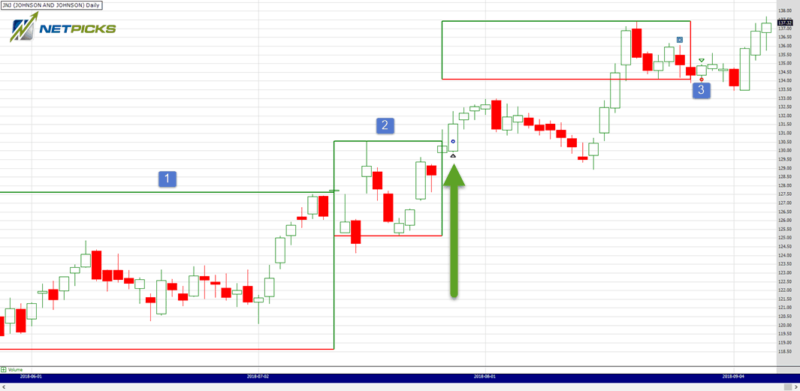What is a Fishbone Diagram? Ishikawa Cause & Effect Diagram


The cause-and-effect analysis allows problem solvers to broaden their thinking and look at the overall picture of a problem. Cause-and-effect diagrams can reflect either cause that blocks the way to the desired state or helpful factors needed to reach the desired state. Cause and effect is a relationship between events or things, where one is the result of the other or others. With members and customers in over 130 countries, ASQ brings together the people, ideas and tools that make our world work better. In ScatterSpoke, there are two ways for you to do that — a more rigid column-based retro format or a free-form canvas. Both are ready for you out of the box, so your distributed team can hit the ground running, jotting down all their great ideas as they shake away the hesitation to ask the tough questions.
The eighth step is to continue the seventh step to drill-down into as much detail as required. This means all stakeholders directly or indirectly involved in the process. For instance, customers, employees, suppliers, partners, and regulators etc. The fish-bone diagram is also known as Ishikawa diagram and the Cause-and-Effect diagram.
This can be verified with a significance test, so that suitable methods can be identified to solve the problems. If you try to find the causes of a problem too quickly, you’ll be in danger of discovering only some of the causes but overlooking the most important ones. The lines branching off from the main line list the actual causes of the problem and are arranged according to the appropriate categories. These causes should be identified very explicitly as opposed to the rather broadly defined main influencing factors.
The fishbone diagram or Ishikawa diagram is a cause-and-effect diagram that helps managers to track down the reasons for imperfections, variations, defects, or failures. The meat used to prepare a customer’s meal has caused food poisoning. In this scenario, the 6 Ms of Production can be used to analyze the problem via the fishbone diagram. After the diagram has been filled in, a quality check should be performed.
Finally, the fishbone diagram is also a great way to look for and prevent quality problems before they ever arise. Use it to troubleshoot before there is trouble, and you can overcome all or most of your teething troubles when introducing something new. An example of a fishbone diagram can be seen using the template from the figure below. We have created a quiz that will evaluate your project management experience, education level and contact hours eligibility to determine whether you are eligible to sit for PMP certification exam.
The smaller bones represent the cascading and drilling down of possible root causes. The raw materials or similar resources used during the business process are represented under this category. Six Sigma is one of the most commonly used process optimisation and quality management methods in companies. This method sets itself apart through its foundation in math and its clear focus on being able to measure change. In the following article, we show you how the Six Sigma method works, what benefits you can gain from it, and how to put it into practice. This graph resembles a fish skeleton, which is why the Ishikawa diagram is also known as the fishbone diagram.

ProjectCubicle.com provides practical solutions, tutorials, articles and templates to help you manage your projects more successfully. Below are some of the limitations of this quality management tool . Helps to determine the methods to improve the process and take corrective actions.
Why Is Project Governance Crucial For Managing Projects?
Encourages brainstorming about the reasons for a certain result because it captures all the causes. The three phases of the creative process are idea generation, organization, and assessment. Fishbone tool is widely used in pharmaceutical to find out the root cause of any problem and it is used in conjugation with “5 why” tool. Each employee state their opinion as to what is the most serious cause of the problem. Continuing using the diagram, each person can evaluate the seriousness of the causes by giving points.
You can understand the PMP salary increase, the cost involved, benefits both tangible and intangible from PMP Certification. The relationships between causes and an effect or a problem can be depicted in the form of a Fishbone diagram. The problem is placed in a box or diamond-shape to represent the head of a fish. This represents the “effect” that all the subsequent causes supposedly impact. The cause themes and sub-themes are placed to the left of the problem. The diagram does not differentiate the major and minor defects based on their severity.
It has been identified that a product that passed through quality control has had issues. To overcome this, the root cause of the issue has to be analyzed. While applying the fishbone diagram of any type related to manufacturing, a solution can be attained. The major causes that are related to the issue are identified in the diagram. In this way, one can easily solve the issue identified in a project or a product using a fishbone diagram. Cause and Effect Diagrams make it easy to examine a problem in production or service delivery processes by organizing the potential causes into smaller categories.
Fix the Issue
All supplies and resources used in the production or process are reviewed to determine their effect. Material defects, mishandling, low quality, and lack of proper inspection can result in problems further along the process. Any standardized methods set by supervisors might not be followed by operators accurately.
- As an example of how this diagram can be applied in practice, imagine a company with insufficient customer support.
- The authors explore how digitizing one of the seven basic quality tools—the fishbone diagram—using mind mapping can significantly improve the tool.
- Kaoru Ishikawa is known to use the fishbone diagram for the first time while working with the Japanese company of Kawasaki.
- It can also help you spot some common mistakes in the workflow of your team .
The next step includes brainstorming all the possible causes and allotting each cause to a specific rib. It is indeed very helpful for your team to proceed without any hindrance. Keep adding all the causes to the rib until you have all the possible causes in your hand. Thus, the above mentioned are some of the categories we can have with the Fishbone diagram. Here, the main aim is to choose the one considering your requirement.
If you want to figure out the root cause of the issue, using the Fishbone diagram is best. With more people involved in the process, you will have more perspectives on the problem. One of the major benefits fishbone dig also known as of having a bigger team is looking for suggestions from the senior members of every department/domain. When using a fishbone diagram, it’s important to monitor your team’s brainstorming ability.
What are the Seven Basic Quality Tools ?
The most important impacts are placed closest to the head of the diagram, the sub-categories are usually larger in these areas which contributes to the fish-style body aesthetic. The best way to identify the main causes of the problem is to ask why it happens. A fishbone diagram is a scheme that is used to interpret cause and effect. The diagram was nicknamed the fishbone diagram because of its shape, a structure with branches that contain causes that stem from a central line that points to a problem. The overall diagram helps to organize ideas into categories to better understand their effect on the main problem.
Fishbone Diagram: Cause and Effect Analysis (Examples & Templates Included)
Note that the 5 whys technique is often used in conjunction with the fishbone – keep asking why until you get to the root cause. Unfortunately, Incident reports often cite human error as the cause of an incident and tends to overlook other important factors which might lead to the human error. For instance, employees may have received insufficient training or perhaps a batch record was not clear. In addition to this, the employee’s suggestion to get a productive result might have been overlooked by the supervisor which might have led to errors in the end. The balanced scorecard by Kaplan and Norton can help you answer this question.
It’s free and easy to use, so you can start mapping your diagram immediately. When you have access to the fishbone diagram, you can customize the format to suit your needs. You can also link to internal and external sites to add any supporting information or context to your diagram. Creating a fishbone diagram in collaboration with cross-functional teams develops trust amongst the employees, enhances knowledge, and provides a thorough understanding of the process. In addition, it helps to focus on defect reduction and process improvement.
Because everyone’s ideas can find a place on the diagram, a cause-and-effect analysis helps to generate consensus about causes. It can help to focus attention on the process where a problem is occurring and to allow for constructive use of facts revealed by reported events. In both cases, a best practice for guiding the team through extracting more in-depth ideas from this brainstorming session is using the 5 Whys method.
Organizing causes affecting quality
In this blog, we’ll focus on Pareto charts and fishbone diagrams. Use a fishbone diagram to map your new product design and visualize any potential hurdles before they come your way. As a result, you can put preventative measures in place before going live. If you have a clear problem statement for your business, a fishbone diagram is a great way to analyze it in detail. You can see the problem’s culprit and decide how to fix the issue. Define failures or problems with your product design, and identify effective solutions.
All these causes are further explored in this Low Customer Satisfaction fishbone diagram. From flat modern elements to a 3D perspective fishbone diagram, several different templates can be used for conducting a root cause analysis, addressing problems, and presenting a solution to the team. It is a visual quality management tool that provides an overall list of possible causes to determine the root cause of a specific event. It helps to understand what causes a problem and what are the possible ways to solve it. To help find the ultimate root cause from all the ideas gathered, a voting technique would solve the problem by having the team members to identify top three major root causes. One can use sticky notes or colored to flags to mark the three major causes.
Fishbone diagrams make it possible for people to understand all of the possible issues that contribute to the main problem, which helps to create unique solutions. The fishbone diagram is a powerful process improvement technique which greatly helps to determine the important factors involved in a process. It is one of the seven basic tools of quality widely used for problem-solving. In order to use this technique, create a team and agree on the problem. Then, define the categories of causes related to the problem and start brainstorming sessions.
The diagram has a structure of a fish that is facing towards the right side. Find ways to ensure that people involved in a process know what to do and when to do it. Understanding how the two differ from each other, and what the appropriate use for each is, can make a huge difference in how you approach the analysis of problems occurring in your daily operations.
Комментировать (0)